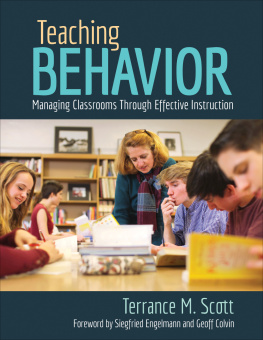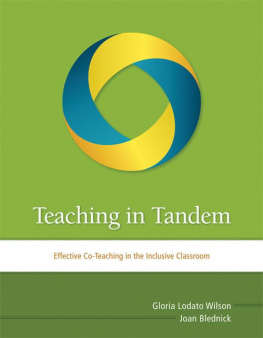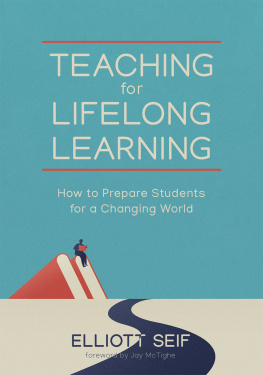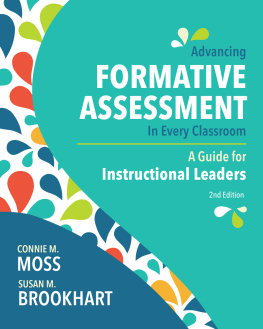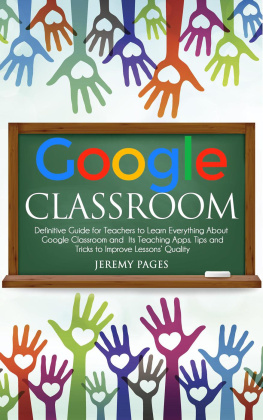
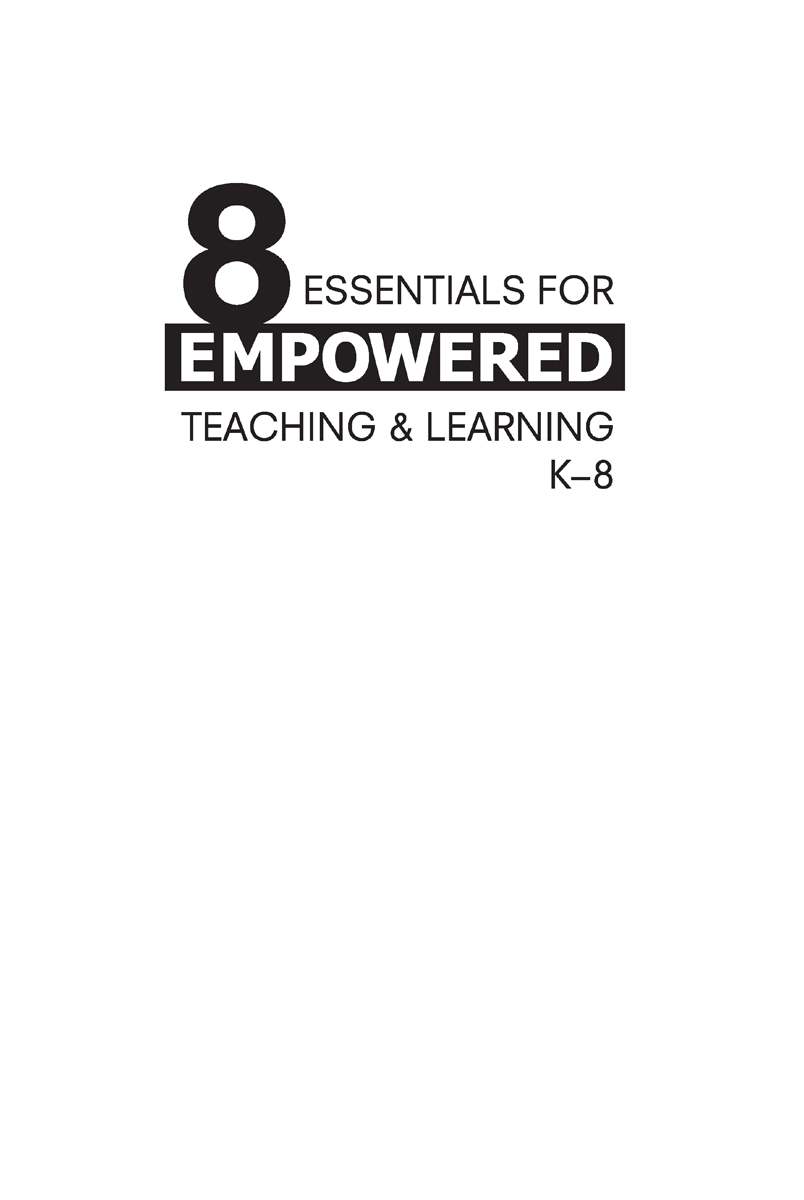
To Mom, Dad, Lynn, Alan, Jeff, Ari, Jordy, and
all the family, friends, teachers, and students
whose support, expertise, and encouragement made this book possible
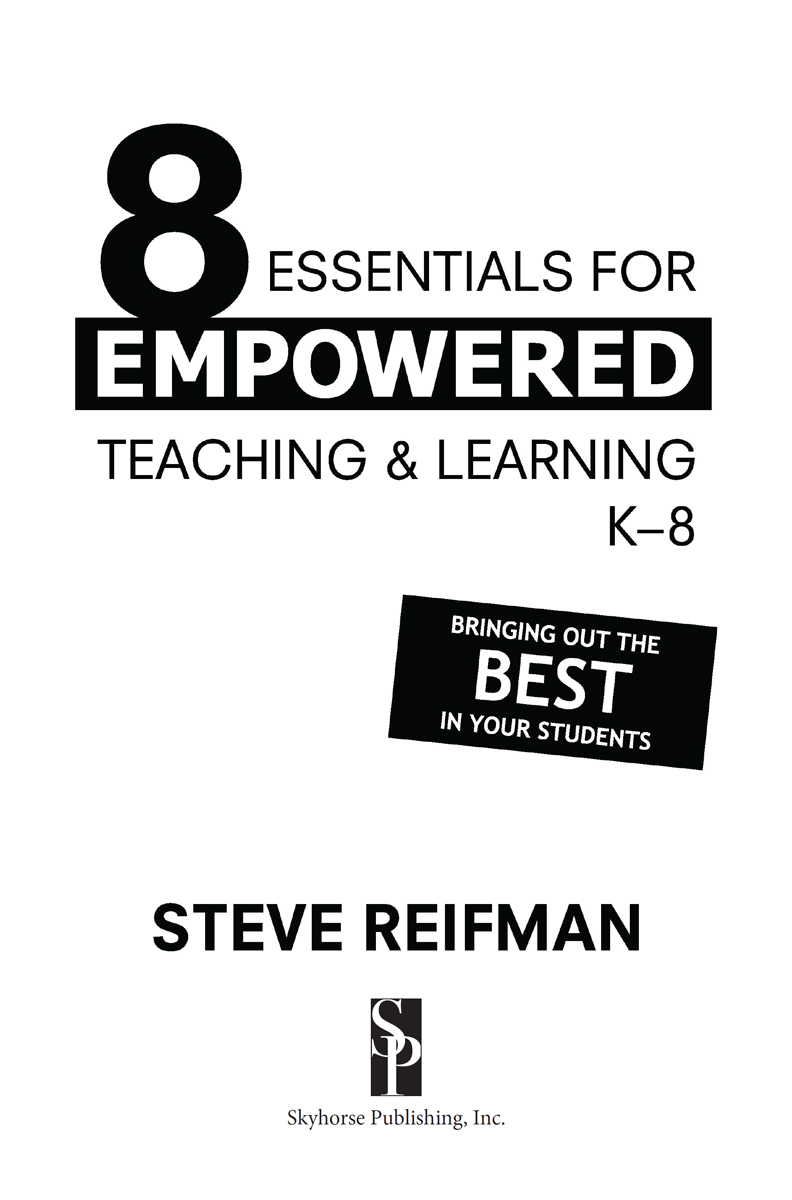
Copyright 2008 by Corwin Press.
First Skyhorse Publishing edition 2018
All rights reserved. No part of this book may be reproduced in any manner without the express written consent of the publisher, except in the case of brief excerpts in critical reviews or articles. All inquiries should be addressed to Skyhorse Publishing, 307 West 36th Street, 11th Floor, New York, NY 10018.
Skyhorse Publishing books may be purchased in bulk at special discounts for sales promotion, corporate gifts, fund-raising, or educational purposes. Special editions can also be created to specifications. For details, contact the Special Sales Department, Sky Pony Press, 307 West 36th Street, 11th Floor, New York, NY 10018 or .
Skyhorse and Skyhorse Publishing are registered trademark of Skyhorse Publishing, Inc., a Delaware corporation.
Visit our website at www.skyhorsepublishing.com.
10 9 8 7 6 5 4 3 2 1
Library of Congress Cataloging-in-Publication Data is available on file.
Cover design by Scott Van Atta
Print ISBN: 978-1-51073-695-5
Ebook ISBN: 978-1-51073-701-3
Printed in the United States of America
CONTENTS
LIST OF FIGURES
ESSENTIAL 1
ESSENTIAL 2
ESSENTIAL 3
ESSENTIAL 4
ESSENTIAL 5
ESSENTIAL 6
ESSENTIAL 7
ESSENTIAL 8
ACKNOWLEDGMENTS
I am extremely grateful for the time, effort, energy, and assistance that so many have given to make this book a reality.
To Carol Collins, Brett Ory, Gem Rabanera, Faye Zucker, Veronica Stapleton, Tina Hardy, and everyone else at Corwin Press who contributed to the production of this book.
To Shanie Fink, Andy Hecht, and Mike Travers, the three original readers of this book, who provided invaluable feedback.
To Dr. David Sands, who, while sitting next to me on a flight from Cancun, Mexico, to Los Angeles, California, saw my manuscript, picked it up, and read it from cover to cover in one sitting. Your interest in and support of my project mean a great deal to me.
To Mervat Fam, Judith Estanislao, and the rest of the Education Department at UCLA Extension for supporting the course that enabled me to field test the ideas that comprise the foundation of this book.
To all the dedicated professionals in my extension classes at UCLA, whose creativity and feedback helped me strengthen the ideas that would become the Eight Essentials for Empowered Teaching and Learning.
To Amy Argento, Viola Callanen, Jillian Esby, and Darlene Fish for their support of this project and for their classroom vignettes.
To Larry Greene, whose encouragement and expertise made the publication of this book possible.
To Jim Braley for going above and beyond the call of duty on numerous occasions in providing technical support for this project.
To Lorie Alexander for her ideas, enthusiasm, and friendship.
To Eric Meyerowitz, whose efforts and architectural skills helped bring the Tower of Opportunity to life.
To W. Edwards Deming, Stephen Covey, Theodore Sizer, Howard Gardner, William Glasser, Lee Jenkins, Alfie Kohn, and the many other experts cited in this book for inspiring me to be the best teacher I can be.
To Paul Kingston, my professor at the University of Virginia, who taught the Sociology of Education course during my final semester that sparked my interest in becoming a teacher.
Finally, to all of my former teachers who had such a strong influence on my development as a student and as a person.
Corwin Press thanks the following reviewers for their contribution to this book:
C. M. Charles
Emeritus Professor
San Diego State University
San Diego, CA
Julie Duford
5th Grade Teacher
Poison Middle School
Poison, MT
Launa Ellison
5th/6th Grade Teacher
Clara Barton School
Minneapolis, MN
Debbie Halcomb
4th Grade Teacher
Robert W. Combs Elementary School
Cornettsville, KY
Joanna Hicks
Humanities Teacher
Liberty Charter High School
Melba, ID
Karen Kersey
2nd Grade Teacher
Albans Elementary School
St. Albans, WV
Kate Kinnan
6th Grade Teacher
Junction City Middle School
Manhattan, KS
Laurie McDonald
Teacher
Duval County School District
Jacksonville Beach, FL
Wendy Miner
Assistant Professor of Education
Truman State University
Kirksville, MO
Cathy Sasaki-White
Elementary School Teacher
Thomas Jefferson Charter School
Caldwell, ID
Gary Willhite
KDP Co-counselor
Reading and Language Studies
Southern Illinois University
Carbondale, IL
ABOUT THE AUTHOR
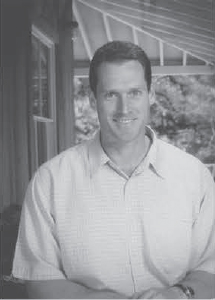
Steve Reifman has been an elementary school teacher for the past 14 years. During that time he has earned National Board Certification, traveled to Japan as a Fulbright Memorial Fund Scholar, and completed two masters degrees. He has experience working with students in all of the elementary grade levels, and he has taught in both public and private schools. Currently, Steve teaches third grade at Roosevelt Elementary School in Santa Monica, California.
Ever since reading William Glassers The Quality School (1990) at the beginning of his career, his primary interest has been the field of quality control. Steve has read extensively in this area, created and led numerous professional development courses, and attended many conferences and workshops. Specifically, the focus of his work in the classroom has involved defining quality in student-friendly terms, measuring it, and creating the conditions where all students are empowered to reach their full potential and appreciate the joy of learning. The author can be reached at .
INTRODUCTION
F ollowing the devastation of World War II, the people of Japan faced an uncertain economic future. The tiny island nation, already hampered by a lack of natural resources and an international reputation for producing shoddy goods, now had to overcome the destruction of its industrial base. Prospects for a strong recovery looked bleak: survival was the immediate goal. In the years to come, however, the Japanese people would do more than just survive; they would achieve perhaps the greatest economic turnaround in modern history.
Ironically, the individual widely credited with initiating the Japanese postwar transformation was an American. His name was W. Edwards Deming. Born in 1900, Deming was trained in mathematics, physics, and engineering, earning his PhD from Yale University in 1928. While working as a statistician for the U.S. Census Bureau in the 1930s, he first received notoriety pioneering the use of sampling techniques in the gathering of data. Under Demings leadership, the bureau won recognition for its ability to provide accurate information on a broad range of areas at a cost that no other organization, public or private, could match. Demings successes earned him an invitation to Japan in the summer of 1950 to meet with top business leaders who were determined to revitalize their nation.
Next page


